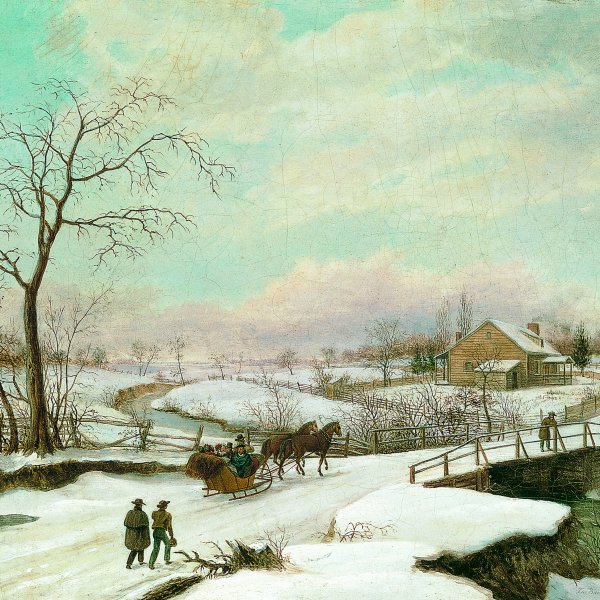Thomas Birch
Thomas Birch, son of William Russell Birch, an engraver, enamel painter and miniaturist, was born in Warwickshire, England, on 26 July 1779. In 1793, when he was fourteen, his family came to Philadelphia, then settling at Neshaminy Bridge, Bucks County, Pennsylvania, before returning to Philadelphia. Father and son worked on a series of Views of Philadelphia which were published in 1800. Thomas studied nature, sketching scenes along the Schuylkill River in Philadelphia with the painters John Wesley Jarvis, Samuel Seymour, and Thomas Sully.
Although he painted a few portraits at the beginning of his career, by 1807 Birch was concerned primarily with marine and landscapes views. He knew the work of the French painter Claude-Joseph Vernet, one of whose paintings he copied, and, more importantly, the Dutch paintings in his father's collection which included works by or after Jacob van Ruisdael, Jan van Goyen, and Jan vas Os. He painted over a dozen paintings depicting various naval engagements of the War of 1812. Birch was Keeper of the Pennsylvania Academy of Fine Arts from 1812-1816. He was elected an Honorary Member, Professional, of the National Academy of Design in 1833, a distinction reserved for artists living outside of New York City, and vice-president of the Artists' Fund Society in Philadelphia, when it was organised in 1835. Birch also exhibited at the Art Unions in Philadelphia and New York and the Boston Athenaeum. Among his artist friends were the portraitist, John Neagle, and the genre painter, John Lewis Krimmel. By at least 1811 until the early 1840s, Birch frequently painted winter landscapes based upon the Dutch tradition. He lived in Philadelphia until his death on 13 January 1851. A short eulogy in Thomas S. Cummings' Historical Annals of the National Academy Design extolled "the freshness of his atmospheres, and the clearly-painted waves" of his marine views.
Kenneth W. Maddox





